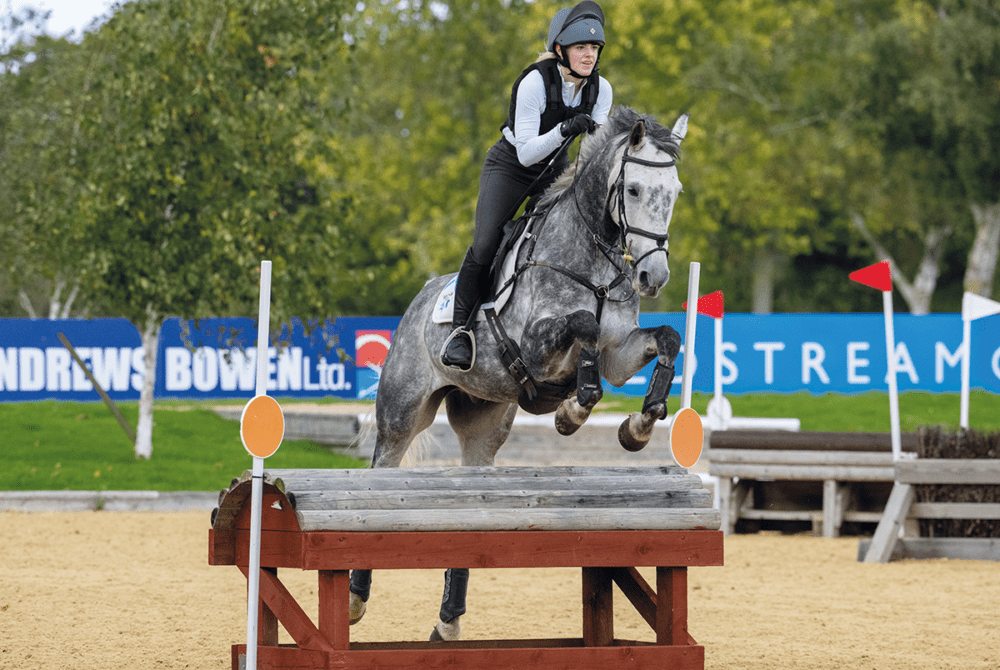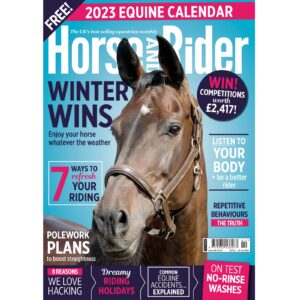Go arena cross-country schooling: part 2
Posted 20th December 2022
Wondering how to introduce your horse to arena cross-country? Eventer Felicity Collins explains how to structure your first session

You’ve chosen your venue and put in the homework, so now it’s time to go for your first arena cross-country session. However, with so much to look at and so many things to introduce your horse to, it can be difficult to know where to start. Worry not – by following my tips, you’ll be on track for a fun-filled session.
Get in the zone
You set the tone for the ride from the moment you unload your horse, so allow yourself plenty of time so you can get him ready in a calm manner. To have a productive session, it’s important your horse is relaxed – you’ll struggle to teach him anything if he’s stressed or distracted.
Factors to consider that might impact the time it takes to relax your horse include…
- how he’s stepped off the lorry Does he feel relaxed or is he slightly on edge? You might need to spend more time walking your horse around, in-hand and ridden, if he’s on his toes
- how busy it is This isn’t just limited to horses – are there lots of people around who are also hiring facilities, or maintenance work going on? This can distract your horse so they’re key things to be aware of as you structure your session
- what else there is to look at Are there banners up around the arena? What are the surroundings like? Where’s the lorry park? These are all questions you need to ask yourself, and remember it’s okay to stick to areas with the least distractions to start with
Try not to put too much pressure on your horse – or yourself – to perform, particularly on your first visit. It might be that the most productive thing you achieve is getting your horse relaxed enough to warm up, work well and pop a few fences before calling it a day.
Repeat rewards
While we’re talking about setting the tone from the beginning, it’s important to praise your horse for any positive steps he makes. A quick scratch on the neck or a “good boy” when he gets it right is plenty. Entering a new arena, going past something spooky, responding to your aids – these are all behaviours worth recognising and rewarding.
Set the pace
Take your time warming up and start by walking around the arenas to get your horse accustomed to his new surroundings. This is as important for an inexperienced horse as it is a more established one, it just might take a bit longer with the former. Allow him to see as many of the jumps as you can and weave him around any you think he’d like a second look at, as well as any spooky or crowded sections of the arena. You’ll need to do this until he feels relaxed and as if he’s listening out for your next instruction.
Wait until your horse is confident walking around the jumps before progressing to trot or canter, plus it’s much easier to manage a spook in walk than in a faster pace.
Your horse will probably feel different from the way he does at home, so one of the first things you should do is test your controls. Can you go forward, stop, turn and alter his stride length? You need to have him in front of your leg before you can start thinking about tackling some fences, so have a play with your horse’s paces and pepper in plenty of changes of rein and transitions to help tune him in to you.
For more tips on how to structure your arena cross-country schooling session, check out February Horse&Rider! Grab your copy today!











